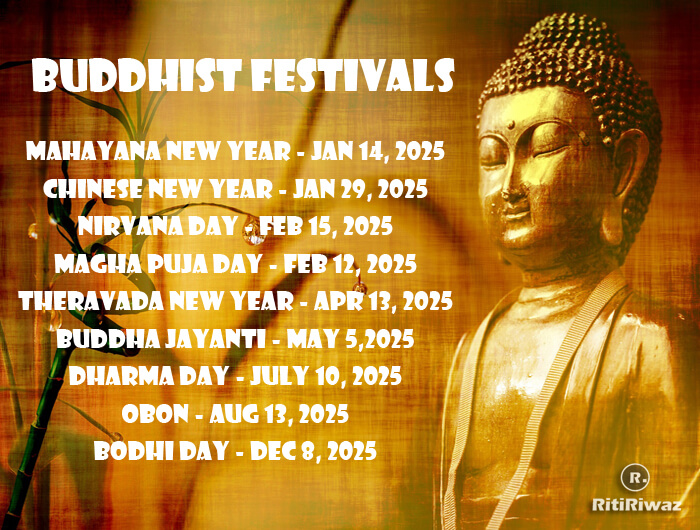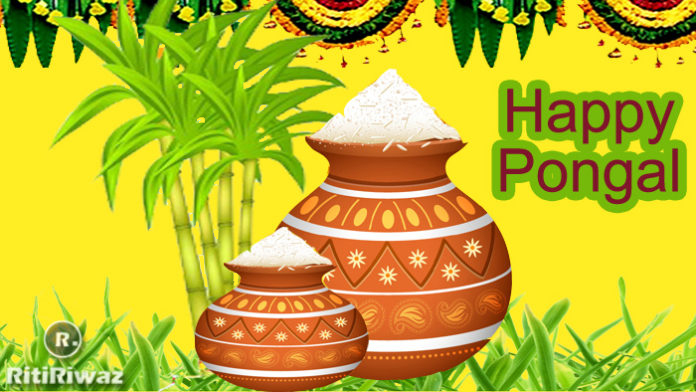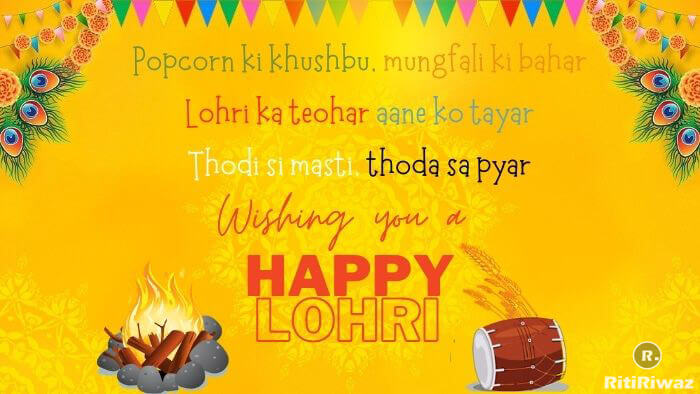Buddhist Festival in the year 2025

Buddhist festival are a chance to pay tribute to the Buddha and his teachings and to remember the historical Buddha, Siddhartha Gautama. Buddhism followers believe that the way to Nirvana is through leading a moral life and meditation on the Eight-fold path. They believe in reincarnation and karma. There are certain festivals that hold immense significance both for Theravada and Mahayana schools of Buddhism.
There are many Buddhist Festival throughout the year which are celebrated by Buddhist community. Most Buddhist, with exception of the Japanese, use the Lunar Calendar and the dates of festival varies from country to country.
The main Buddhist festival of the year is Buddha Day / Wesak / Vaisakha, the celebration of the Buddha’s birth, enlightenment and death on the first full moon day in May. Buddhists all over the world celebrate the birth, enlightenment and death of the Buddha in a single day.
Major Buddhist Festival
Buddhist New Year
In Theravadin countries, the new year is celebrated for three days from the first full moon day in April, while Mahayana countries, the new year starts on the first full moon in January. Buddhist New Year depends on the country of origin or ethnic background like Chinese, Korean, and Vietnamese celebrate in late January or early February according to lunar calendar, while the Tibetans usually celebrate about one month later. Thailand, Burma, Sri Lanka, Cambodia, and Laos celebrate new year in April.
Vesak – Buddha’s birth, Enlightenment and passing away
Buddha Jayanti , Vesak Day or Visakha Puja is one of the most important festival in Buddhist tradition. It falls on full-moon day in May (Vaisakh) when Buddha was born, and 35 years later awoke to the unexcelled right self-awakening, and another 45 years later passed away into total nibbana. Buddhists take the opportunity to pay homage to the Buddha on this day and as a way of expressing our gratitude for his goodness. Lights are offered to images of the Buddha, as a symbol of the enlightenment that he achieved, and to which every Buddhist aspires.
The exact date of Vesak varies according to the lunar calendars used in different traditions. In the countries that follow the Theravada tradition following the Buddhist calendar, it falls on the full moon day of vaisakh or May which typically falls o the 5th or 6th lunar month. The date varies from year to year in the western Gregorian calendar but falls in April or May.
Magha Puja
Magha Puja or Sangha Day commemorates the spontaneous assembly of 1,250 arahants in the Buddha’s presence. It takes place on the full moon day of the third lunar month (March).
Asalha Puja Day (Dharma Day)
Asalha Puja Day commemorates the Buddha’s first discourse, which he gave to the group of five monks with whom he had practiced in the forest for many years. The day falls on the full moon day of the 8th lunar month (Approximately July)
Pavarana Day
Pavarana Day marks the end of the three months of Rains Retreat or vassa. It is celebrated on the full moon day of the 11th lunar month and coincides with October-November of the Gregorian calendar.
Anapanasati Day (Mindfulness of Breathing Day)
This day is associated with the end of the same retreat (vassa), when Buddha taught breathing techniques of meditation. Celebrated of the full moon of the tenth month in the lunar calendar, the Buddha gave his famous teaching about the regulation of breathing, used during meditation (anapanasati) and since then known as ‘Anapanasati Day‘.
Abhidhamma Day
The Abhidhamma Day is the day when Buddha returned to Earth after completing his delivery of Abhidhamma to his mother in Tavatimsa. The Abhidhamma Day falls on the full moon day of Thadingyut, the seventh month of the Burmese lunar calendar, which coincides with October in the Gregorian calendar.
Losar
The Tibetan New Year is celebrated with almost equal enthusiasm in India too. Dressing up, going to temples and visiting relatives are common features. The Chaam dance performances in the monasteries are very popular and signify the victory of good over evil.
Songkran
Songkran is a celebration of the Thai New Year, held in April each year. The name Songkran comes from a Sanskrit word meaning ‘passing’ or ‘approaching’ and it’s one of the most significant Buddhist holidays in Thailand.
Loy Krathong (Festival of Floating Bowls)
Loy Krathong Festival known as Thailand’s Festival of Lights, is an annual traditional Siamese festival celebrated by Thais to pay respect to the Goddess of Water and the Buddha. People gather around lakes, rivers, and canals to release krathongs (lotus-shaped rafts decorated with banana leaves, flowers, and candles).
The Elephant Festival
The Buddha elephant festival is the big Elephant Festival celebrate by Buddha peoples each year. Buddha used the example of a wild elephant that is harnessed to a tame one to train to teach that a person new to Buddhism should be helped by an older Buddhist.
Uposatha (Observance Day)
Uposatha days are times of renewed dedication to Dhamma practice, observed by lay followers and monastics throughout the world of Theravada Buddhism.
The Ploughing Festival
Ploughing Festival falls on a half-full moon day. This festival is an ancient royal ritual which is held to mark the traditional beginning of the rice-growing season. This tradition, which has Hindu and Buddhist origins is intended to honour farmers and to bless the plants as well as the ceremonial start to the new rice growing season.
The Festival of the Tooth
Sri Lanka ‘s Festival of the Sacred Tooth is one of the oldest and grandest of all Buddhist festivals, featuring dancers, jugglers, musicians, fire-breathers, and lavishly decorated elephants. The date of the ten-day observance is determined by the lunar calendar and usually occurs in July or August.
Ullambana/Obon (Ancestor Day)
Ullambana is one of the renowned Buddhism’s Festivities whose observance is based on the story of his disciple- ‘Maudgalyayana’. It is basically observed in September month. “Obon,” from Sanskrit’s “Ullambana,” suggests great suffering, as the full term translates into “hanging upside down.”
Avalokitesvara (Kuan Yin) Birthday
Buddhist holiday is especially popular in Nepal and Tibet. Celebrated on the full moon day of the second month of the lunar calendar. Avalokitesvara (meaning “Lord Who Looks Down”) in Buddhism is regarded as a god who represent the compassion of Buddha. She is regarded as the left hand of Amitabha and jointly referred to as the three saints of the West.
Buddhist Festival Calendar 2025
Mahayana New Year – January 14, 2025
Chinese New Year – January 29, 2025
Nirvana Day – February 15, 2025
Magha Puja Day – February 12, 2025
Theravada New Year – April 13, 2025
Buddha Jayanti – May 5, 2025
Dharma Day – July 10, 2025
Obon – August 13, 2025
Bodhi Day – December 08, 2025






